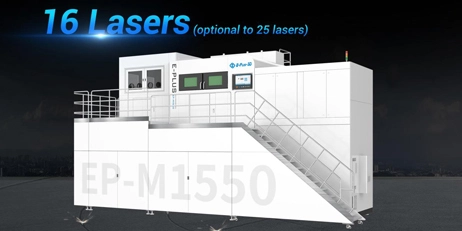The industrial world is a sector that accounts for a great amount of energy consumption globally. As the population and industry continue to grow, the need for higher energy efficiency is becoming a priority in order to prevent energy consumption from becoming unsustainable. 3D printing technology is increasingly being used for energy applications and industrial production, offering tremendous potential for increasing energy efficiency.
3D printing for energy applications
3D printing has become extremely versatile in its applications, with its potential extending far beyond traditional photocopying. Particularly in the energy sector, 3D printing has been used to create components and devices for improving energy efficiency in large-scale industrial production. Examples of this include the production of parts for renewable energy sources, such as wind turbines. 3D printing can aid in producing parts quickly and efficiently while reducing reliance on energy from traditional sources like fossil fuels.
Additionally, 3D-printed components can replace traditional components that require replacing often, resulting in fewer production shutdowns that waste time and resources. The energy savings resulting from increased efficiency alone are tremendous, with minimal wasteful energy expenditure. This can be done in a cost-effective manner without affecting the quality of the final product.
Eco-friendly benefits of 3D printing
Due to their precision and accuracy, 3D-printed components help to save resources, including energy and raw materials, throughout the manufacturing process. The number of materials required for printing is also much fewer than with traditional manufacturing methods, meaning fewer energy inputs and fewer emissions. This makes 3D-printed components more energy-efficient and eco-friendly than other methods of production.
The use of 3D printing technology in the industrial sector can also help to reduce plastic consumption by allowing for the reuse of old materials. This helps to cut down on the reliance on new plastics, which require high inputs of energy to manufacture. By maximizing the use of renewable energy sources and implementing procedures to reuse existing materials, 3D printing can facilitate a more sustainable approach to industrial production.
3D Printing opportunities to increase energy efficiency
The potential applications of 3D printing technology to the energy sector are numerous, with many opportunities still unexplored. By utilizing 3D printing for energy applications, the industrial sector can become more energetically efficient, while continuing to produce a high-quality product.
At a traditional manufacturing plant, energy losses often occur in the form of heat. This is because machines and equipment heat up during the production process, and this heat is not always captured and put to good use. However, through 3D printing, the excess heat produced can be harnessed in order to power other processes, leading to higher energy efficiency.
In conclusion, 3D printing offers significant potential for increasing energy efficiency in industrial production. By making use of renewable energy sources and reusing existing materials, 3D printing can offer an eco-friendly, cost-effective solution to energy consumption. Additionally, by utilizing the excess heat produced in the printing process, the use of energy in the industrial sector can be made more efficient. The benefits of 3D printing for energy applications are immense and should not be overlooked.























